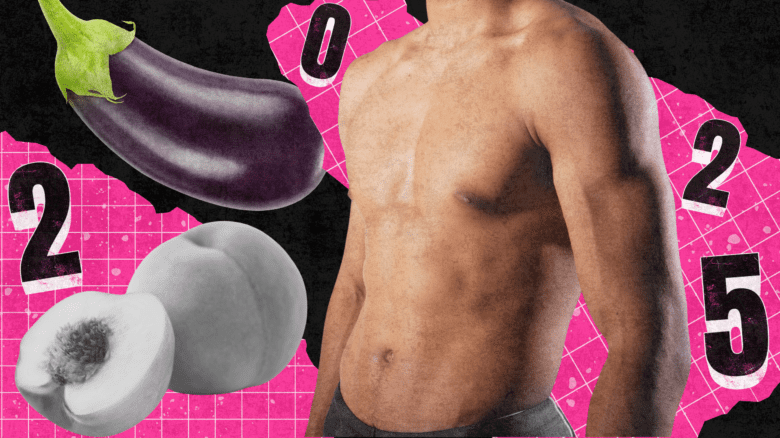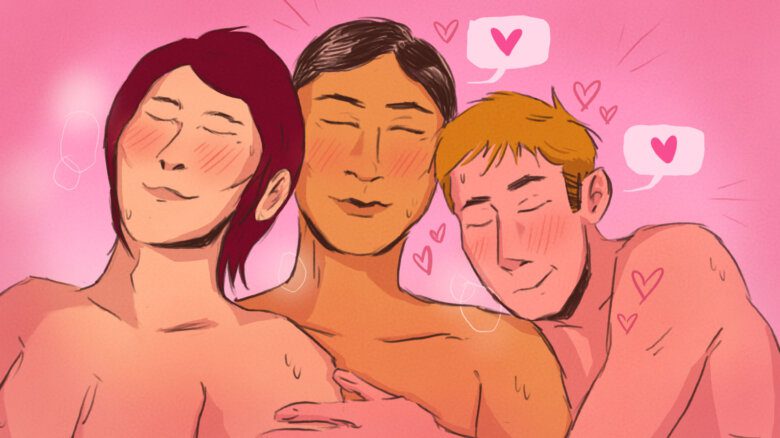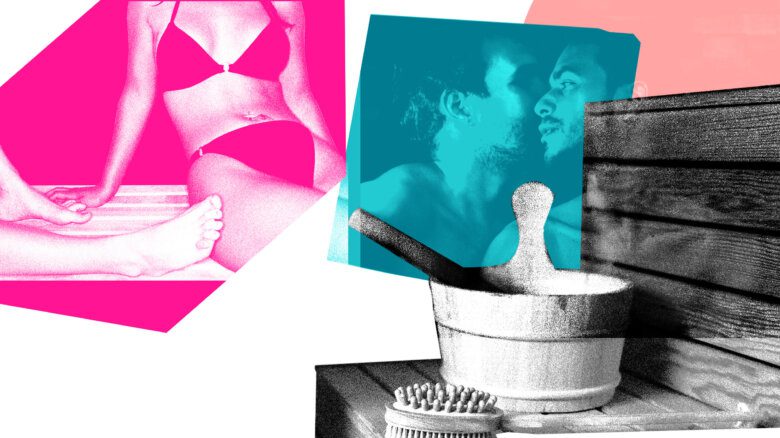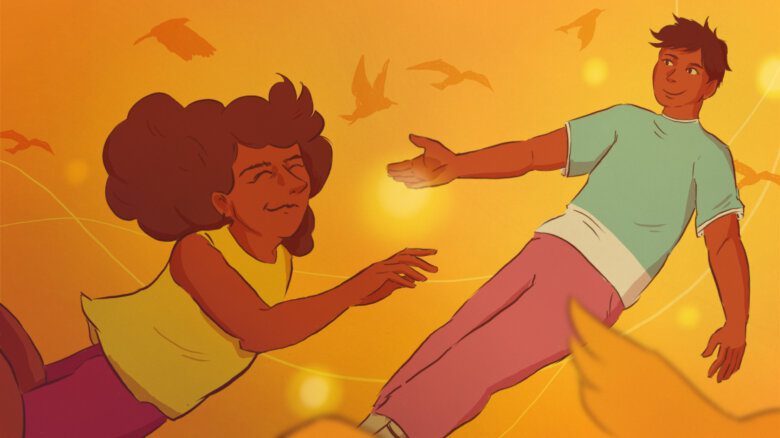In January, on the third weekend of the eleventh month of this endless pandemic, I felt flattened by so many weights: COVID-19, Zoom calls, the grind of winter running, depression. I was desperate for a change—anything that would jolt me out of my sleepy state and into a prickly awareness. As my boyfriend, Cole, and I squeezed into my top-floor apartment bathroom, I stared into my small, crooked mirror, assessing the years of wavy growth on my head—bleached by sun, split by heat and dryness and curled by months of relentless humidity. I parted my long, honeyed tresses and pinched my hair into four ponytails. I exhaled deeply: “Okay, I’m ready.”
I stepped into the bathtub in a sports bra and shorts and held the first ponytail perpendicular to my head. Wielding a pair of scissors, Cole sawed through my thick mane, tugging at my scalp as he hacked through the hair, and the first ponytail fell to the bathtub floor.
We repeated the process for three more ponytails, leaving behind a mess of comically uneven clumps. I was reminded of when my family would grab four pairs of scissors and crowd around our golden retriever, Daisy, to give her a sloppy DIY summer haircut in our Indiana backyard. Cole, who had never cut hair before (such is the exigency of quarantine life), used the scissors to sculpt and style the uneven patchwork he’d mowed across my skull—and, surprisingly, it began to take shape.
A roommate shuffled into the bathroom with an extension cord so that we could connect our electric clippers to a distant outlet. “It looks so good!” she squealed. As Cole took the clippers to the back and sides of my head, the mechanical buzz vibrated through my skull.
And when I looked in the mirror, it did indeed look “so good.” A Princess Diana-textured pixie meets retro ’80s mom-with-a-middle-part; short and edgy yet downy and messy—me. I didn’t miss my ponytails or braids or even my beloved space buns for a second. I turned on the showerhead to wash off all the little bits of hair clinging to my neck and shoulders and massaged shampoo through my delightfully short locks.
When I got out of the shower, I posted a photo of my new haircut. Within minutes, I received a text from an old friend. As the first person I came out to, he’d guided me through my “baby gay” years of college. “I like your haircut,” he typed. “You definitely don’t look straight.”
Exactly what I was going for.
This pandemic year has slackened so many human ties, untethering bodies from one another, leaving us to float in our isolation. We’ve been left without lifelines or anchors or chances to see how we might feel and change by interacting with each other—instead, we sit in our mostly not-at-all-private spaces doomscrolling on our phones.
In this tired solitude, all my communities—but perhaps especially my queer community—have drifted further away. Even more acutely, I felt that my queerness was drifting away. I found the pandemic invisibilizing. So much of this time is characterized by stasis, and we remember people as we last saw them. I sometimes feel one dimensional in other people’s eyes; through a hetero-lens, my queerness becomes flattened.
“I felt that my queerness was drifting away. I found the pandemic invisibilizing.”
I entered the pandemic in the early stages of my relationship with Cole—a cishet man—and I imagine others see our relationship as straight and static. One of the many things this pandemic has robbed us of is the opportunity to present ourselves as complex, evolving individuals. Through Zoom screens and absence, we are collapsed.
But this haircut was rejuvenating, dimensionalizing. It made me feel multifaceted and animated, pulling me out of my planar state as a flat form glued to the floor and giving me depth and permission to take up space—a prismatic affirmation of my bisexuality. It was empowering to reclaim agency when our lives are otherwise out of our control. It felt dramatic and bold when every day is Blursday. Liberating when I’d felt trapped. When I looked in the mirror of my tiny apartment bathroom, I saw the haircut I was always meant to have.
The decision to cut my hair was less about being visible to the world and more about being visible to myself. I was struggling with my mental health and feeling out of sync with my body, constantly fighting against my mind as the pandemic resurfaced the eating disorder I’d struggled against for more than a decade. My haircut brought me into myself or out of myself or centred me within myself or all of those shifts at once, complicated and contradictory as they may be.
“This haircut was rejuvenating, dimensionalizing. It made me feel multifaceted and animated.”
I felt gay and gorgeous, sapphic and sultry. And I also felt profoundly in love with the man who had given me my haircut, squatting on the bathroom tile, helping me clean up the blonde dust bunnies of hair that had floated to the ground.
I had never before been in a straight relationship where my sexuality was not viewed as a threat. Cole created space for my queerness to exist in our monogamous relationship, invited me to be all of myself with him. He sends me videos from Lesbian TikTok and tweets about Doc Martens. He consumes content from queer creators, texts me “happy bi vis day shorty!” and asks how he can be supportive. He is gender bending and comfortable in his own masculinity, enough to paint his nails, pierce his ears and nose, suggest we do face masks, spend an hour deep conditioning his long curly locks or let me give him an “xoxo” ass tat—his signature sign-off for texts, emails and cards.
Here I was with Cole, the man who, when I was experiencing the worst symptoms of my anorexia and depression and desperate for something to do with my hands for some relief from my thoughts, offered me his favourite pair of jeans to embroider with dainty, multicoloured flowers. Cole, who posed for a photo recreation of the movie poster for The Graduate: Me in his suit as Benjamin Braddock, he in my fishnets as Mrs. Robinson, one leg seductively extended into the foreground. Cole is so much at once; his less conventionally masculine presentation and openness to all that is not straight or gender conforming are what allow me to be all of myself, allow me to ask him—let him—cut my hair.
“I gave Cole the scissors and trusted him with my hair and my head and my heart.”
For months before the haircut, I’d tried to elicit a reaction or endorsement of a dramatic style change: “Should I just chop it all off?” I’d ask him, flourishing my hand in a swift cutting motion through the air. “That would look great,” he’d respond. And then I’d let my shoulders drop with a sigh and waffle, “But I love my braids!” and he’d simply say, “I love your braids, too.” I did not have to mute or feminize parts of myself that felt loud or masculine, and I didn’t have to emphasize my sexuality to feel seen.
The real, unexpected gift of the haircut was that it was a co-creation and re-creation of my identity. We invited queerness into the bathroom and into our relationship. I gave Cole the scissors and trusted him with my hair and my head and my heart. It was as if he were saying, as he snipped around my bangs, “I love all of you, support all of you.” And as I stood there and let him cut my flatness away, it was my way of saying, “Thank you for seeing me as my whole queer self. I choose you over everyone.”
At the end of February, I laid in bed next to Cole and scrolled through Instagram, pausing my feed to watch the Canadian 1,500-metre record-holder bleach and dye her pixie cut over her bathroom sink. “She’s my new favourite queer runner,” I said to Cole, flashing the screen displaying her vibrant shock of ruby hair.
He glanced up to look at my phone. “You’re my favourite queer runner,” he said.
I tousled my new haircut and beamed, scattering sunlight around the room.
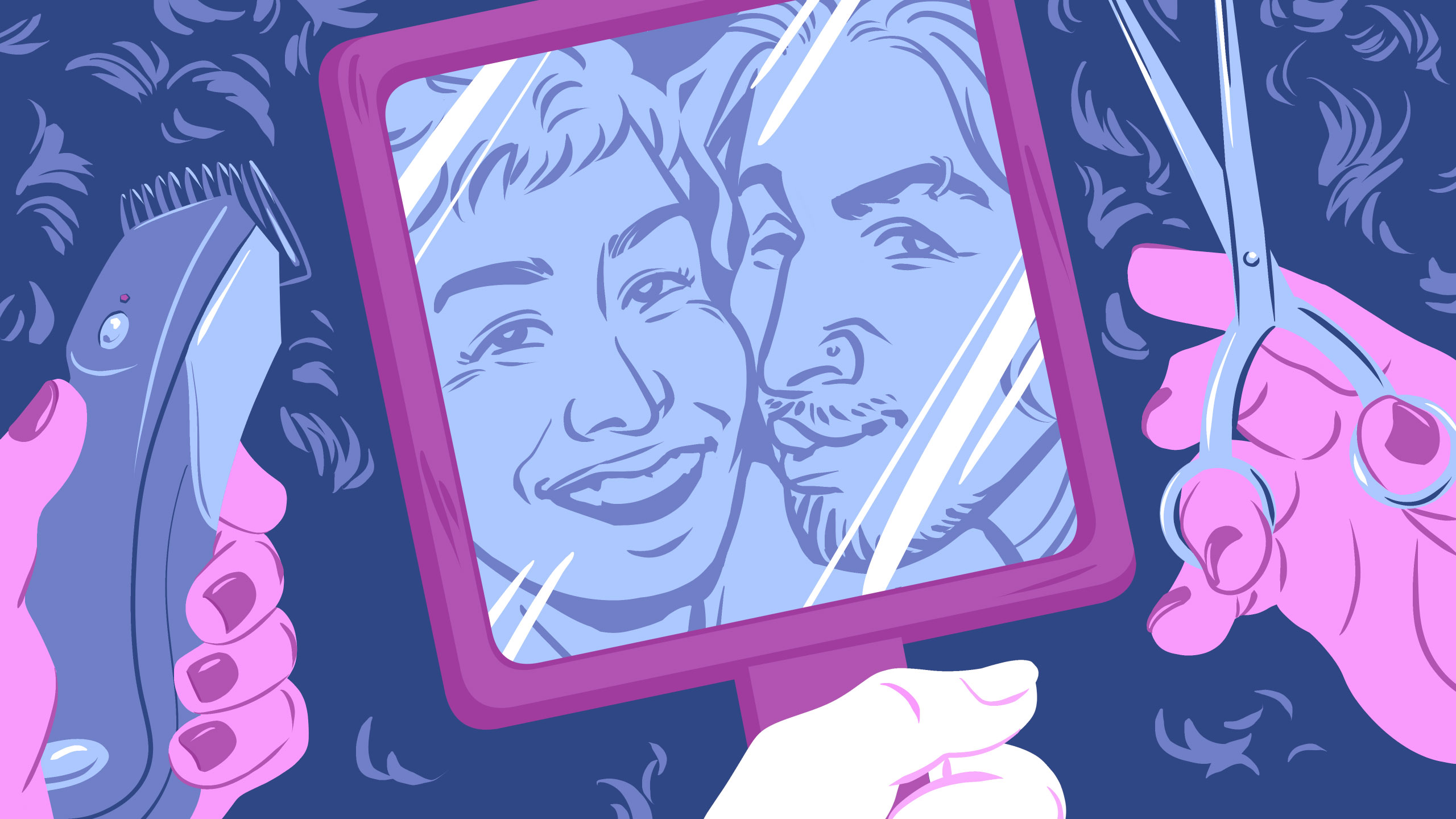

 Why you can trust Xtra
Why you can trust Xtra